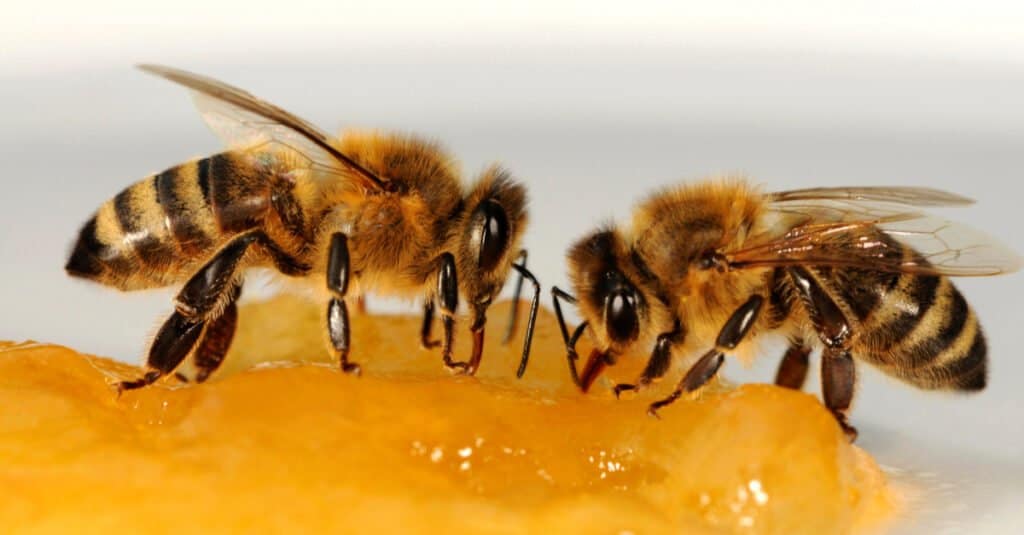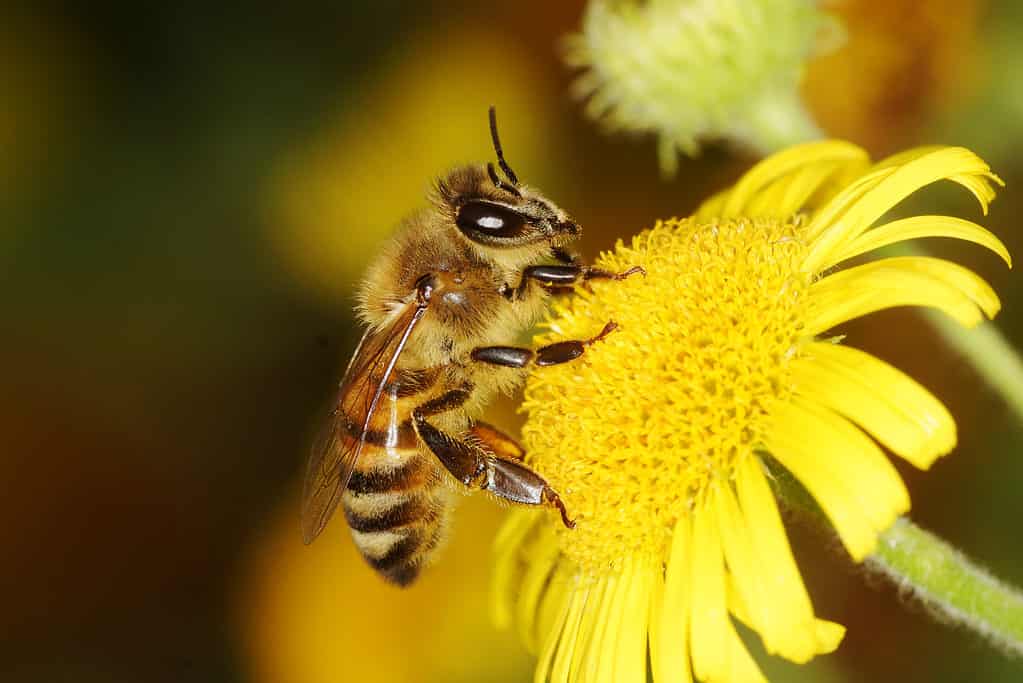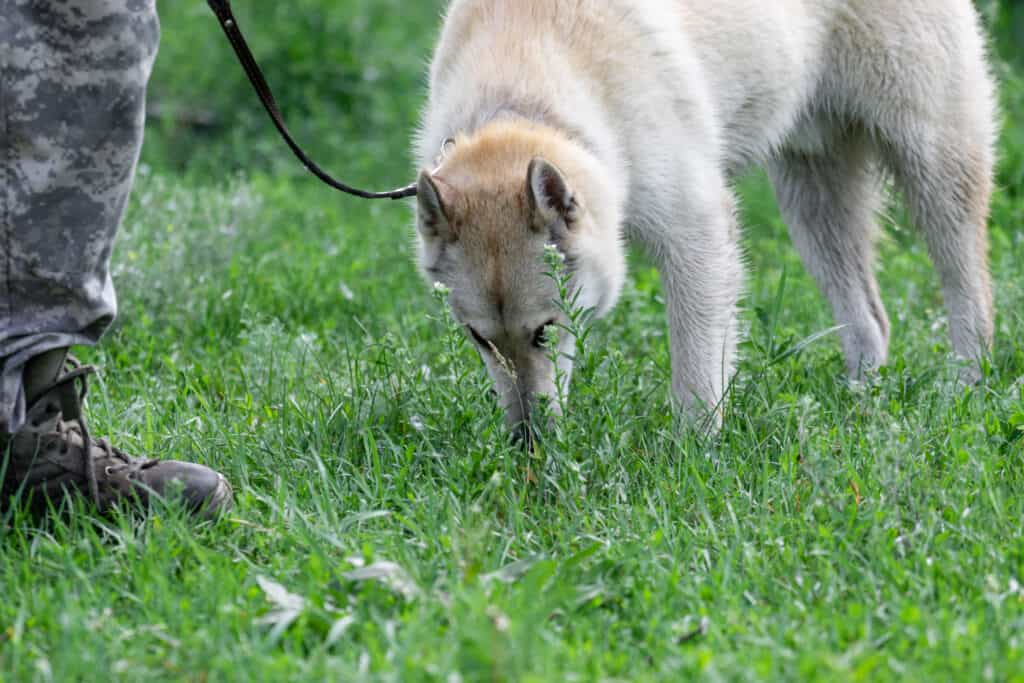Genius Bees Get ‘College Educated’ to Help Save Human Lives!
Step into the remarkable world of honeybees and watch as they undergo a transformative journey in the fascinating video below. These bees aid authorities in safeguarding sports events, airports, and other large crowds through cutting-edge explosive detection devices. These dr yet crucial insects play a pivotal role in this groundbreaking technology. Their journey is captured in an illuminating video.
The process commences at ‘bee college’. Here, industrious creatures receive an education equipping them to identify explosives. Firstly, beekeepers gently gather bees from hives and temporarily place them in specially designed containers. These containers serve the purpose of facilitating this process. A brief sojourn in a freezer reduces their metabolic rate, facilitating ease of handling. The next phase involves outfitting the bees with miniature harnesses. Each harness houses a computer chip. These harnesses secure the bees in place, allowing only their heads to protrude. The bees become an integral part of this sophisticated setup, whether manually placed or mechanically inserted using an automatic harnessing machine.
Sequestered in small tanks, the bees encounter the scents of explosives for a fleeting 6 seconds. During the final 3 seconds, a sweet reward in the form of sugar water is dispensed. The bees rapidly form an association, linking explosive odors with the prospect of a sugary treat. This repetition of exposure leads the bees to spontaneously extend their tongues upon sensing explosives. This is a critical breakthrough in the detection process.
Once They’re Educated, These Bees Are Off to the Authorities!

Honeybees use their tongues like straws, sucking nectar or honey up as food! These are the tongues that help detect explosives!
©schubbel/Shutterstock.com
Bees put on small harnesses, carefully arranged into bee magazines, and inserted into detection devices. Within these devices, cameras or infrared sensors keenly monitor the bees‘ tiny heads sticking out of their harnesses. During air sample testing, any instance of the bees extending their tongues prompts an alert. This alert signifies potential explosive presence. Deployed in the field, the device triggers exposure to air samples with the push of a button. This provokes a swift response from the bees. They anticipate the sugary enticement linked to explosive odors imperceptible to humans. If many of the bees begin responding to the odors they’ve been exposed to, it confirms explosives in the area, and authorities can take the proper precautions to save lives.
Remarkably, these dedicated bees only have to serve for a few days. Then, they are released back to their hives. Their unique experience is akin to an alien abduction, and surely they return home with a tale to tell. The captivating video below chronicles the incredible voyage of these honeybees. It underscores their instrumental role in fortifying security measures and preserving public safety.
The Superhuman Senses of Insects are Surprisingly Powerful!
Bees possess an extraordinary sense of smell. This sense plays a pivotal role in identifying explosives, as shown in the earlier video. It also contributes to various other facets of their lives. Their olfactory prowess helps them navigate a world rich in scents. So this allows them to efficiently locate flowers and food sources. Bees can follow intricate scent trails left by other bees. This ensures the colony’s sustenance through their keen olfaction.
Inside the hive, the bees’ exceptional sense of smell serves as a communication tool. As they release specific pheromones, chemical signals transmit vital information to their fellow colony members. Furthermore these pheromones convey messages about hive health, danger presence, and new nesting site locations. They foster a harmonious and coordinated hive environment.

75% of the world’s crops rely on pollinators. Creating bee gardens helps the planet.
©Maciej Olszewski/Shutterstock.com
Comparing bees to other insects with robust senses, ants stand out from the crowd. They have an impressive ability to detect chemical cues like bees. Ants rely on pheromones to communicate and navigate. Ants create scent trails to guide peers to food sources. Additionally, they use pheromones to mark territories or alert others to danger.
In the insect realm, heightened senses converge to give species a leg up in their world surrounded by threats. The video below only highlights the superhuman sense of bees’ contributing to modern security. By showing how strong this sense of smell is, the clip also helps unveil the intricate sensory world. An unseen world shaping interactions, survival, and exceptional capabilities.
Animal Assistance is Only Just Beginning to be Matched by Pure Technology!
The incredible bees in the video below aren’t the only animals that help authorities in these crucial, life-saving jobs! Certain breeds of dogs, known for their remarkable sense of smell, aid authorities in explosives detection. They undergo rigorous training, honing scent skills to unprecedented levels. Labrador Retrievers, German Shorthaired Pointers and Golden Retrievers are particularly popular in these roles. Their natural obedience and strong sense of smell allows them to reach unprecedented scent detection levels. Then their training enhances their indispensable role in explosives detection for authorities.

A dog of the West
Siberian
Laika breed sniffs the ground taking a trail or looking for explosives next to a hunter or a military army serviceman standing in a military camouflage uniform
©iStock.com/K64End
Transitioning to safeguarding lives, dolphins also have been used to help humans save lives. Trained by numerous militaries around the globe, they locate underwater mines with their ultrasonic capabilities, enhancing naval security and stopping tragic losses of life!
Certain bird species alert against impending danger. Falcons, sharp in vision and swift in covering vast areas, can intercept potential threats. Some police departments around the world have even begun training eagles to take out drones endangering airspace!
Turning to Technology is the Only Way to Match Animals’ Abilities!
Without the help of these specific animals, humans need to lean on robotics and technology to strengthen modern security efforts. Drones, equipped with advanced sensors, serve surveillance and reconnaissance purposes. Unmanned aerial vehicles, with incredibly powerful cameras, can take detailed pictures of the ground from tens of thousands of feet in the sky. These drones monitor challenging areas inaccessible to humans, or can provide a line of sight on an area otherwise too dangerous for a military to approach with personnel.
Technological innovation only ever matches comprehensive animal utilization, highlighting the true power of other animals’ senses. Authorities and militaries worldwide employ them to enhance security, prevent attacks, and save lives. Without the help of these animals, humans would be much worse off!
Watch These Honeybees Receive an Education and Work on the Front Lines!
Thank you for reading! Have some feedback for us? Contact the AZ Animals editorial team.








